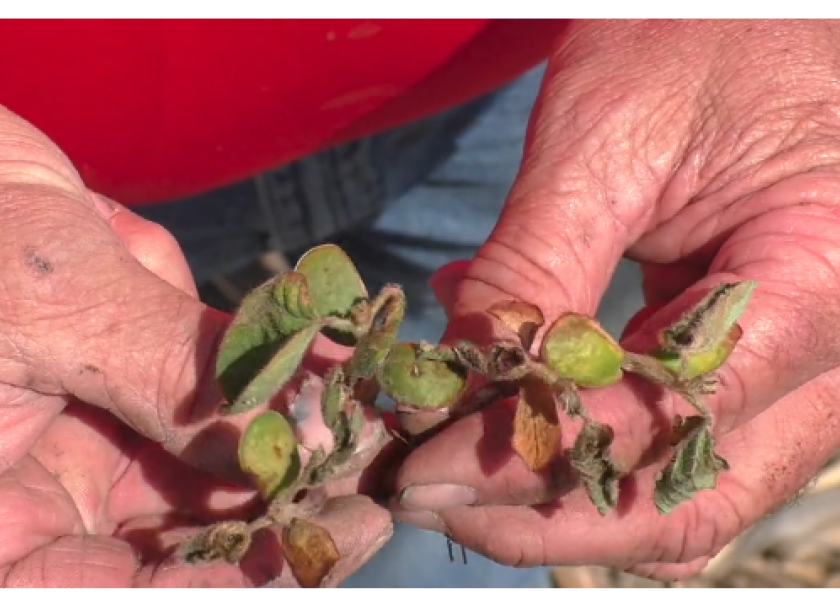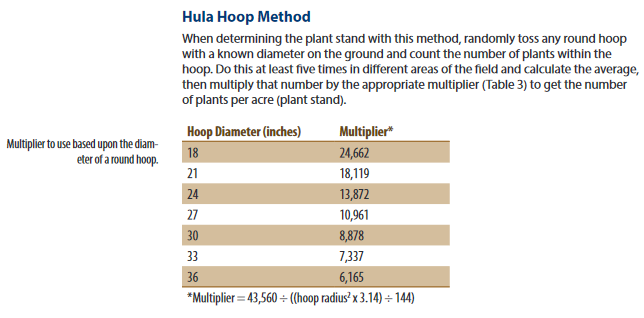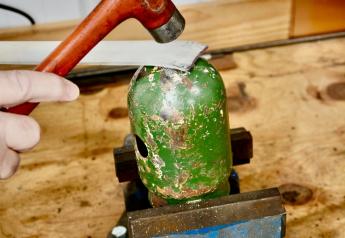Ferrie: Don’t Rush to Replant Frosted Soybeans; Check their Viability First

If frost hammered your soybeans any one or more of the past few nights, what you find out in those fields during the next few days can help you decide whether to leave the crop alone or tear it out and replant.
“Early planted beans come at a yield premium, so we don’t want to give up on them too soon if enough plants will survive the frost damage,” says Ken Ferrie, Farm Journal Field Agronomist and owner of Crop-Tech Consulting, near Heyworth, Ill.
Ferrie says soybeans along the I-80 corridor endured four nights of frost in some cases this past week. Soybeans planted between April 4 and April 7 were particularly hard hit.
“These beans were a little bigger than the rest, and the bigger the bean the harder it is for them to take a frost like this,” he explains.
Wind also played a role in the damage equation. Where some wind was present, there was less damage. Where there was little to no wind, frost was able to settle more fully on the beans and damage them.
“So, your west and north boundaries along the grass, those outside three rows – no matter whether you're no-till or conventional till – in a lot of cases those beans are smoked,” Ferrie reports. “If your row cleaners weren't floating and you ‘valley tilled’ and pushed residue up, the beans are probably dead in there, because the air current couldn't get through,” he adds.
No-till soybeans were also harder hit because of the amount of residue present. Residue tends to keep soils a little cooler and also restricts air flow, allowing a freeze to go lower on the soybean stem and move below the cotyledons.
Evaluate soybeans for survival. If your soybeans are melted into the ground and none survived or survival is poor, the decision to move forward with replanting is fairly easy to make.
What is more difficult to assess are those fields where you potentially have a plant population survival rate that ranges between 60,000 and 100,000. Those are the scenarios where you don’t want to jump the gun and replant too quickly. Instead, Ferrie says to do some random stand counts, so you know what plants are alive or dead. He likes to use the hula-hoop method. (See chart below, which was provided by Adam P. Gaspar, Shawn P. Conley, & John M. Gaska at the Department of Agronomy, University of Wisconsin-Madison.)
As you do a stand count, consider which beans are alive and which ones are likely to live. To decide the latter, you will probably need some growing degree units (GDUs) in the field to spur new growth. Ferrie says that by this Wednesday or Thursday, based on the current weather forecast, you should be able to tell in most cases whether those beans are alive.
Another practice that can help you determine whether the plants will live is to check them by applying turgor pressure. Take your thumb and forefinger and gently squeeze the soybean beneath the cotyledons. If the plant is soft and squishy, it’s either dead or in the process of dying. If the area below the cotyledon is firm, that plant is still alive and likely to recover.
“This is why we’re dragging our feet a bit on telling you to replant some of these fields,” Ferrie says. “If we have 60,000 plants we think are going to make it and another 30,000 that are on the line, that's going to put you at 90,000 plants at least. We would take 90,000 April-planted beans over May planted beans, but we have to stay on top of it.”
Ferrie adds that if you do need to replant, don’t panic. You have time. “We're going to miss our window for early flowering, but we're not going to miss our window for a normal yield,” he says. “We’ve got a lot of time here yet to put this thing back together, so we need to be careful what we do.”
Another consideration is the amount of weed pressure your fields face. Ferrie goes into detail on this issue and how to evaluate soybeans after frost at the video available here: https://www.croptechinc.com/soybean-frost-replant-information/
Ultra-Early Planted Soybeans Fight Frost and Freeze Damage
Ferrie: How to Check for Freeze Damage After Near Record Cold April
Ken Ferrie’s Top Tips for Variable-Rate Planting








